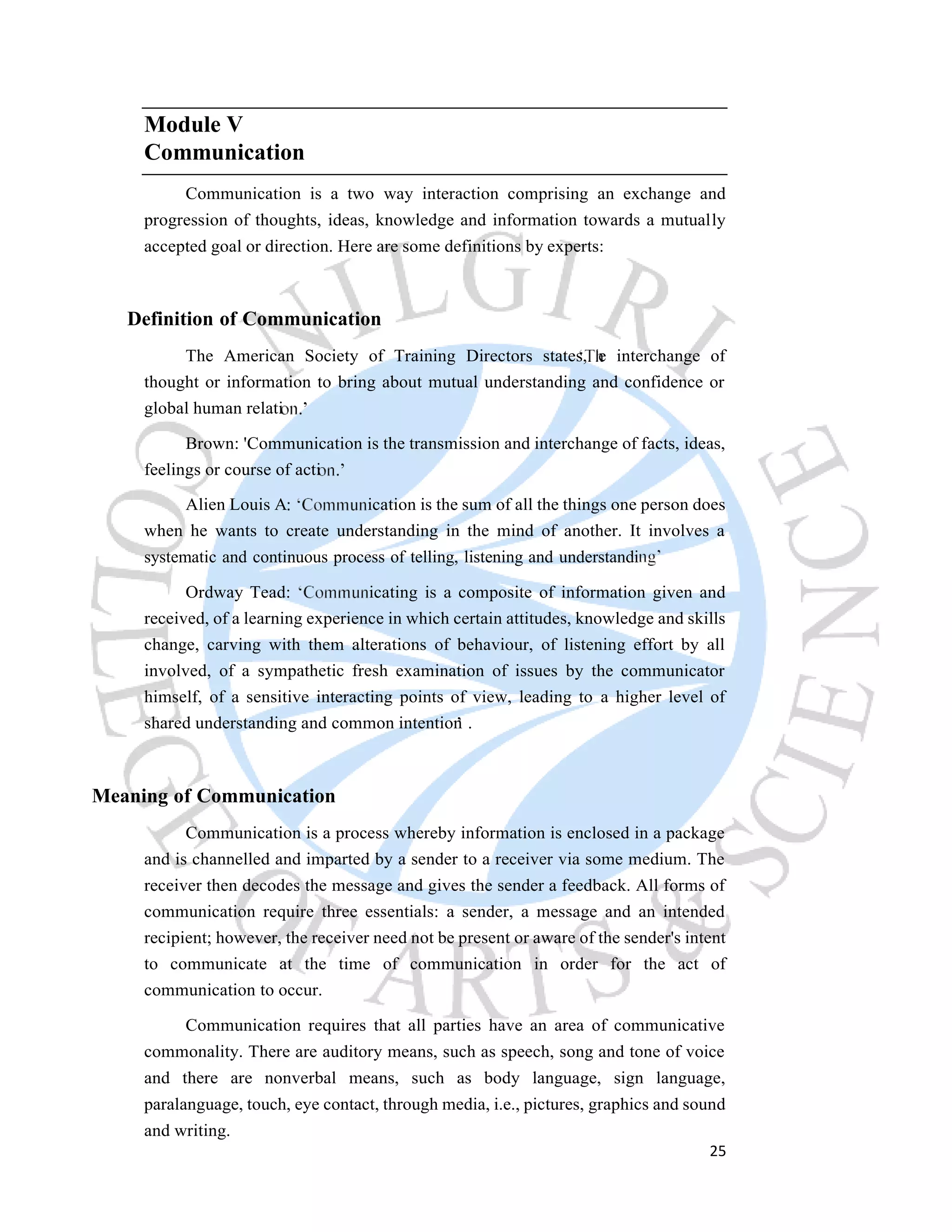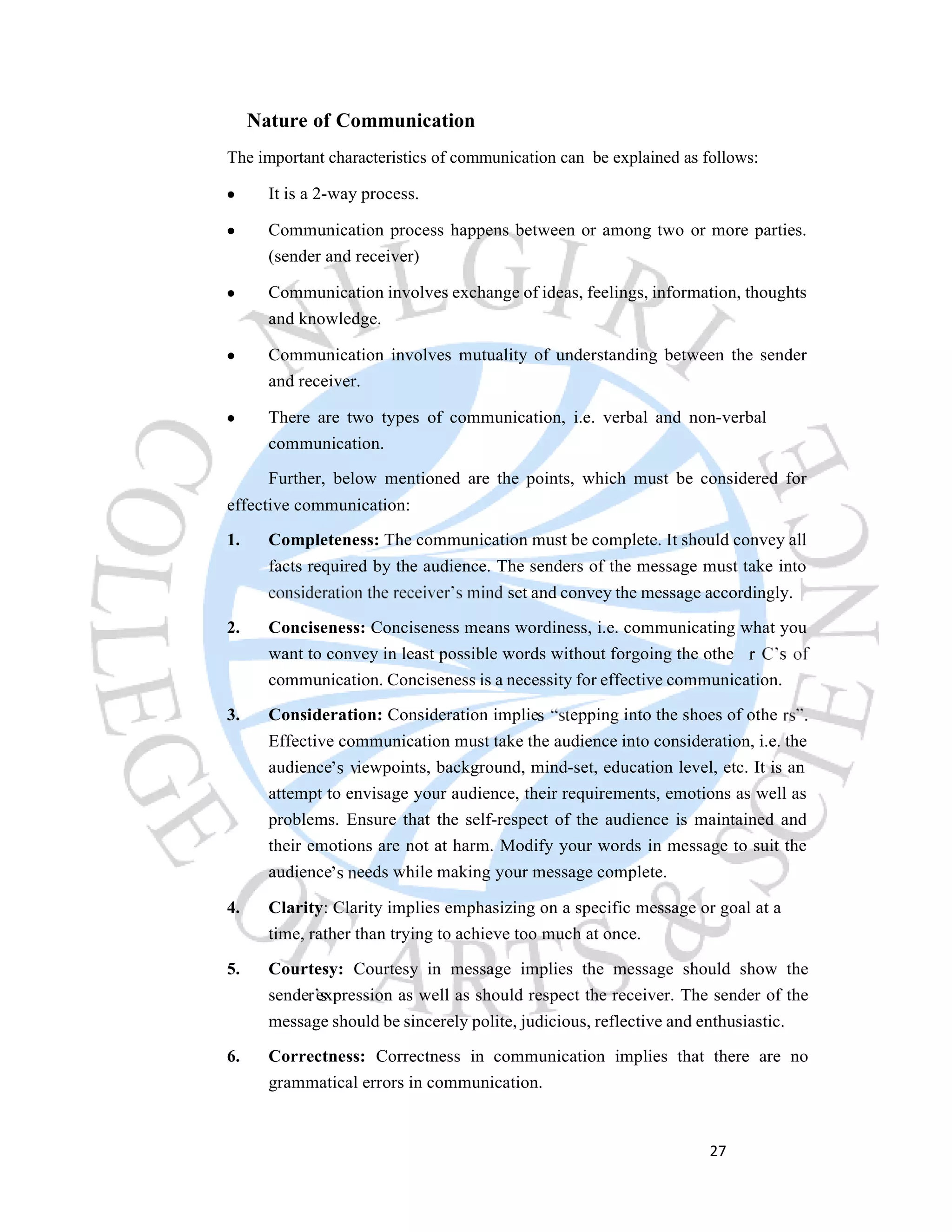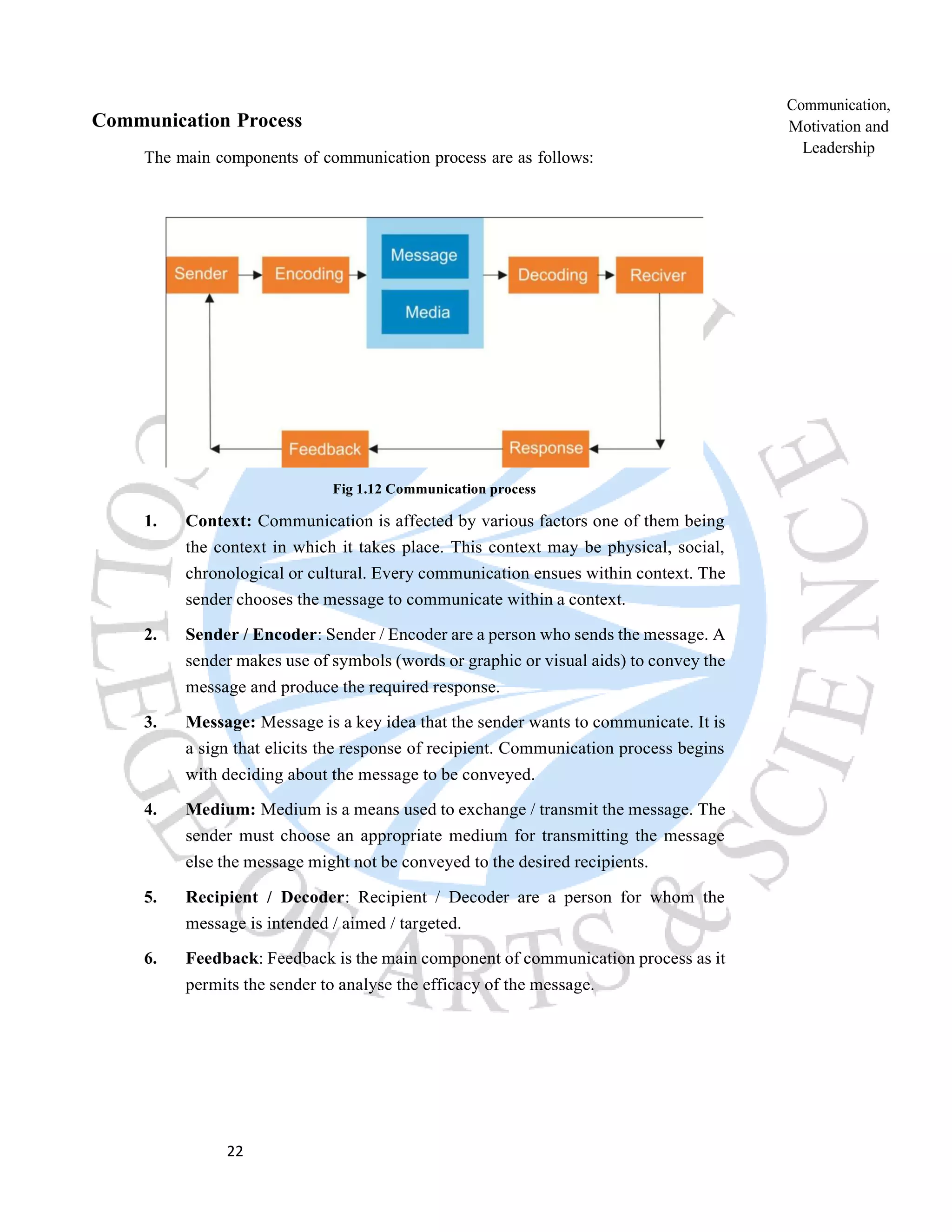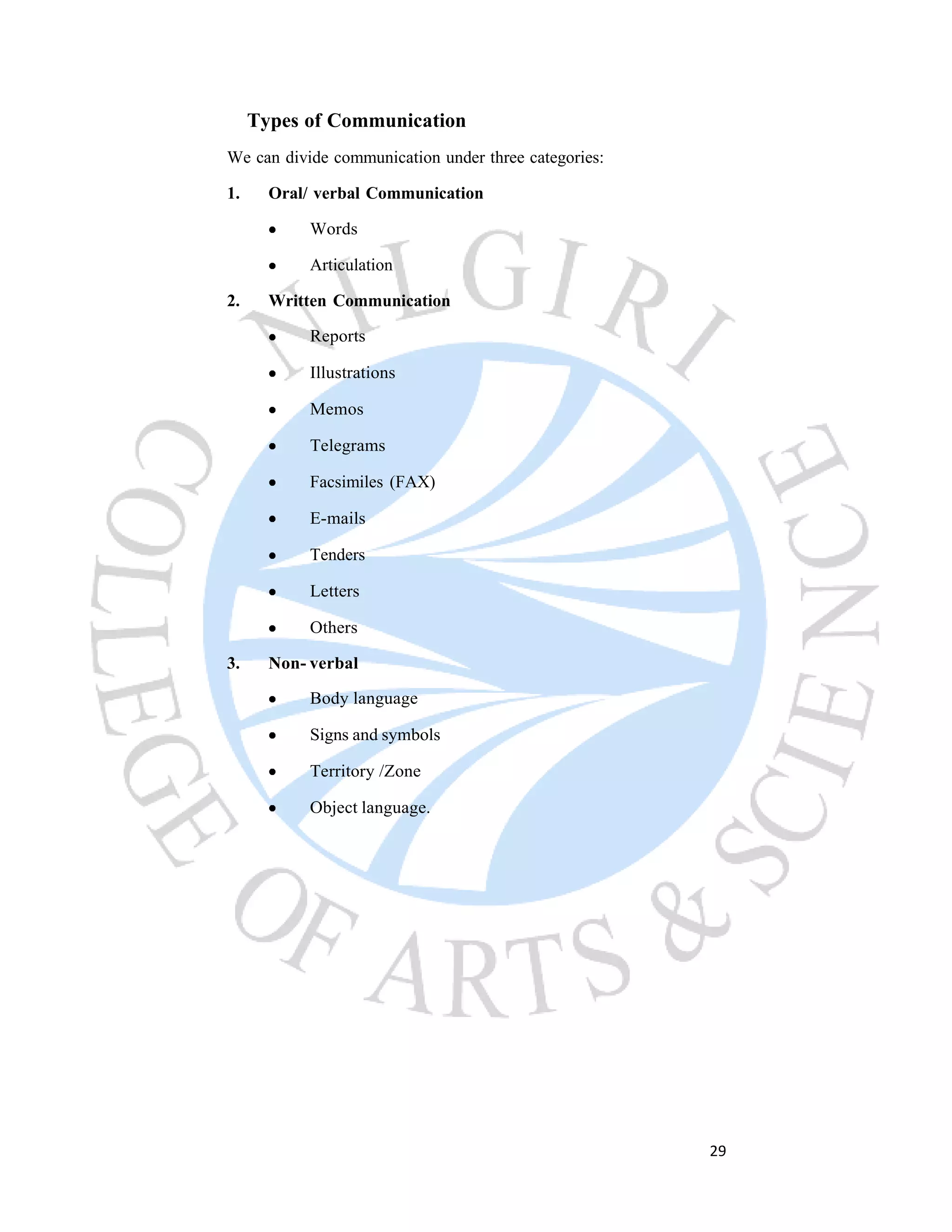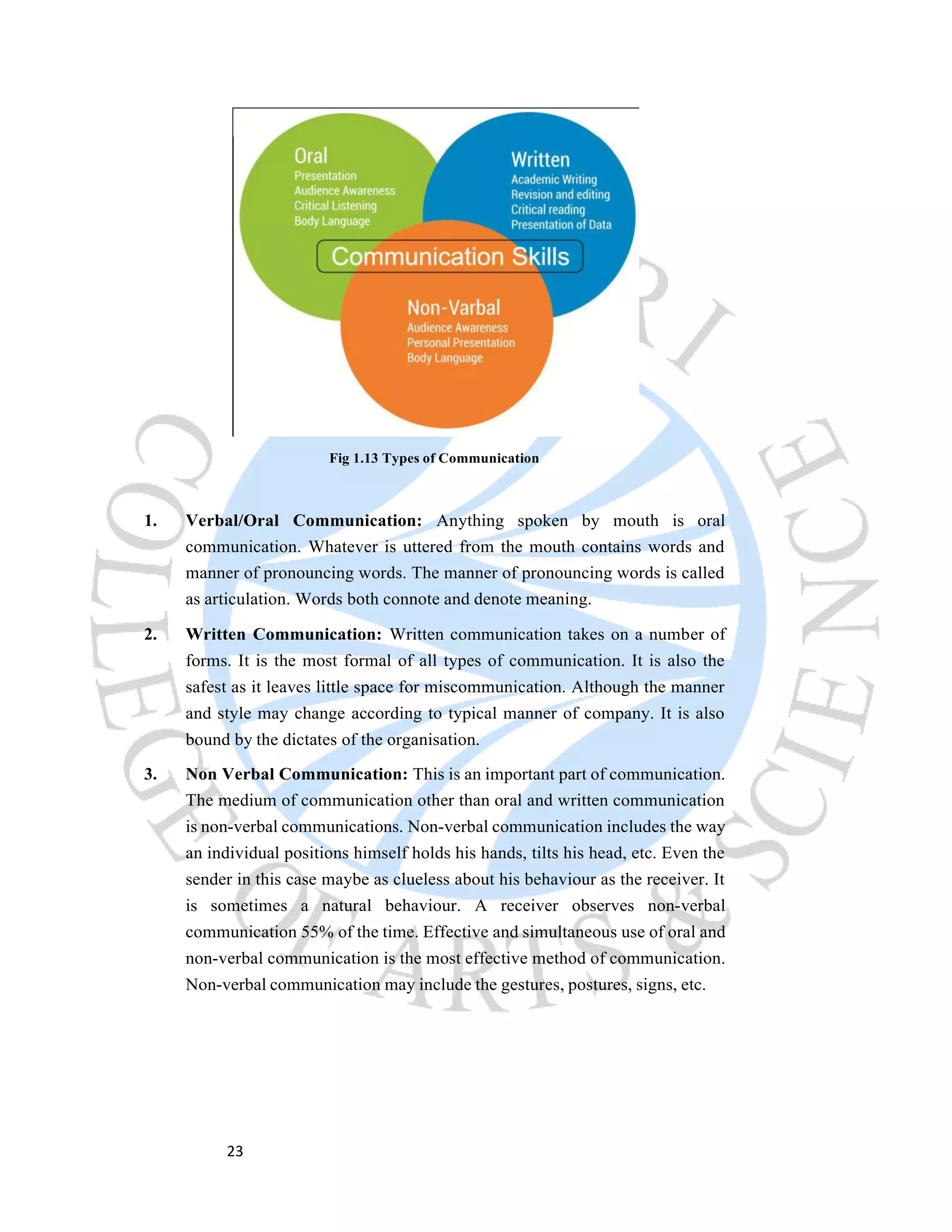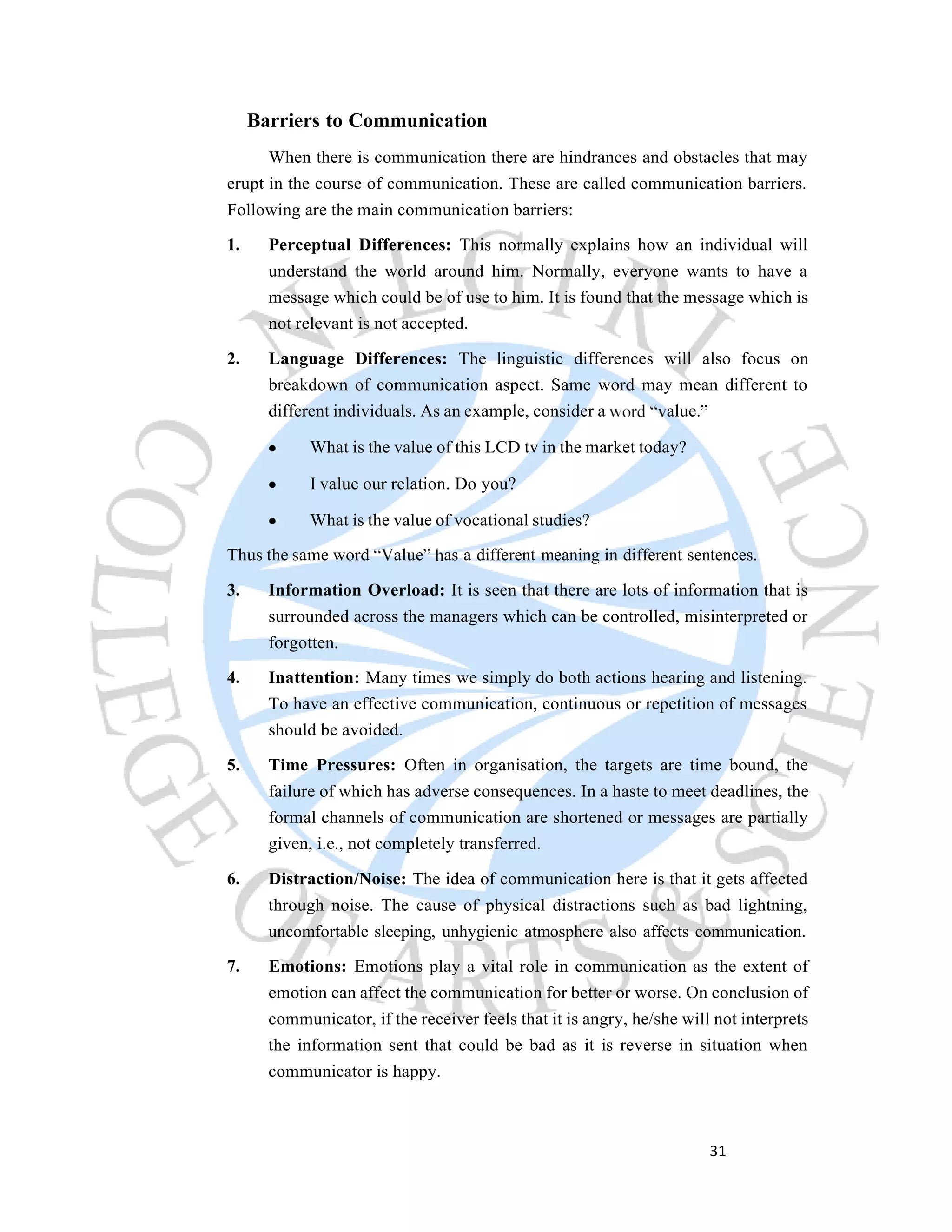Communication involves the exchange of thoughts, ideas, knowledge and information between two parties to work towards a shared goal. It is a two-way process that uses both verbal and non-verbal means. Effective communication is complete, concise, considers the audience, is clear and courteous. The communication process involves a sender encoding a message and transmitting it through a medium to a receiver who decodes it and provides feedback. Barriers like differences in perception, language, too much information, distractions and emotions can interfere with communication.
